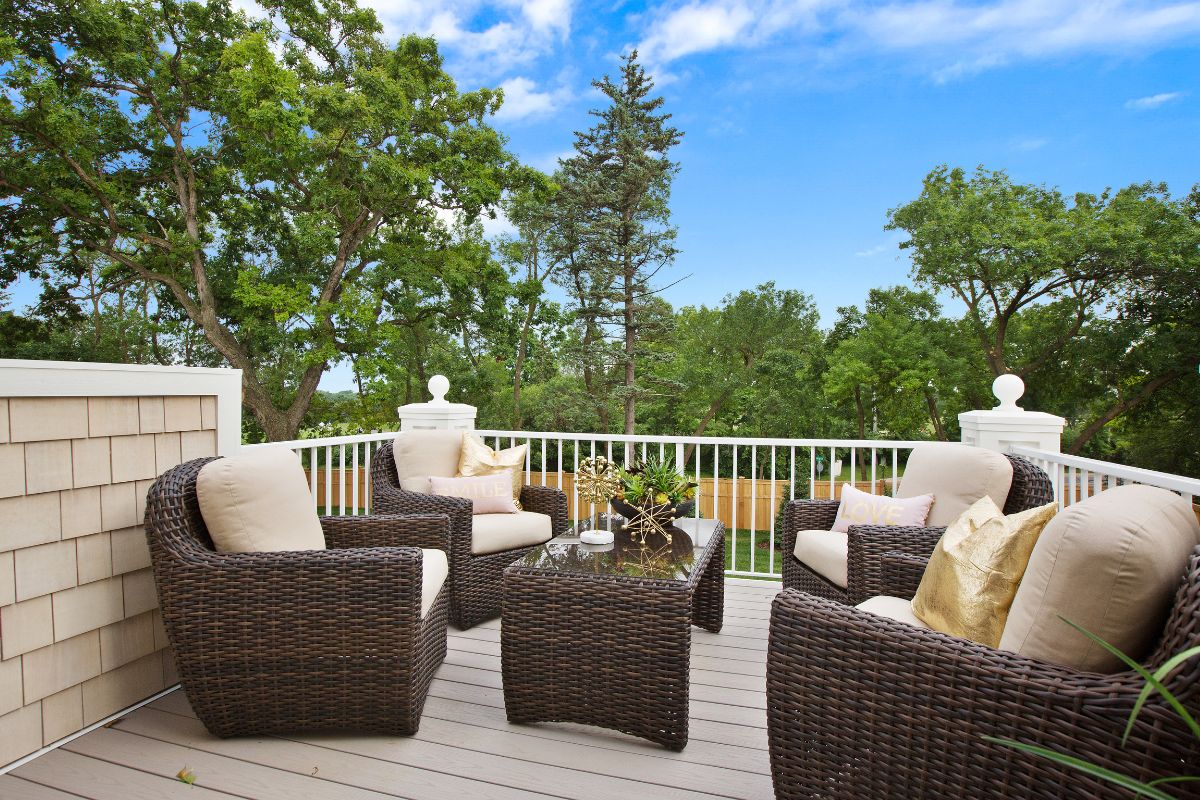When it comes to outfitting your outdoor space, selecting the right furniture is crucial for both aesthetic appeal and durability. Outdoor furniture not only needs to withstand varying weather conditions but also maintain its beauty and functionality over time.
With a plethora of materials available, choosing the best one can be a daunting task. However, understanding the characteristics and advantages of each material can simplify the decision-making process. Here are the best materials for outdoor furniture, considering factors like weather resistance, maintenance requirements, and style.
Table of Contents
1. Teak
Teak is often considered the gold standard for outdoor furniture due to its exceptional durability and natural resistance to rot, insects, and moisture. Originating from Southeast Asia, teak is renowned for its rich, honey-brown hue that gracefully weathers to a silver-gray patina over time. Its high oil content makes it inherently resistant to water damage, making it ideal for outdoor settings.
One of the significant advantages of teak is its low maintenance requirements. While it can be left untreated to develop a silvery patina, periodic oiling can help retain its original color. Teak furniture is typically sturdy and long-lasting, making it a worthwhile investment for outdoor spaces.
2. Aluminum
Aluminum is another popular choice for outdoor furniture, prized for its lightweight yet sturdy construction. It is naturally rust-resistant, making it an excellent option for humid or coastal environments. Unlike iron or steel, aluminum furniture won’t rust or corrode when exposed to moisture, making it highly durable.
Additionally, aluminum furniture is easy to clean and maintain, requiring only occasional washing with mild soap and water. Its versatility allows for various styles and designs, from sleek modern pieces to intricate vintage-inspired designs. Powder-coated finishes further enhance its durability and aesthetic appeal, offering protection against fading and scratches.
3. Wicker/Rattan
Wicker and rattan furniture bring a touch of natural elegance to outdoor spaces, evoking a relaxed, tropical ambiance. While both terms are often used interchangeably, wicker refers to the weaving technique, whereas rattan denotes the material derived from the rattan palm plant.
Natural wicker furniture is crafted from plant fibers like rattan, bamboo, or seagrass, offering excellent resilience against the elements. Synthetic wicker, made from resin or PVC, provides enhanced durability and resistance to fading, moisture, and insects. This makes it suitable for outdoor use without compromising on aesthetics.
Wicker furniture is lightweight, making it easy to move around, and its airy construction allows for adequate airflow, preventing mold and mildew growth. Regular maintenance involves occasional cleaning with a mild detergent and water to remove dirt and debris.
4. Powder-Coated Steel
Powder-coated steel combines the strength of steel with a protective powder coating, offering robustness and resistance to rust and corrosion. This makes it suitable for outdoor furniture, especially in regions with harsh weather conditions.
The process of powder coating includes dusting the steel surface with a dry powder, which is then heated to create a hard, protective layer. This process enhances the steel’s durability, making it less prone to chipping, scratching, or fading. Powder-coated steel furniture comes in various styles and colors, providing versatility and aesthetic appeal for outdoor spaces.
5. Polyethylene (PE) Wicker
Polyethylene (PE) wicker is a synthetic material that replicates the look and feel of natural wicker while offering enhanced durability and weather resistance. Unlike natural wicker, PE wicker does not crack, fade, or deteriorate when exposed to sunlight, moisture, or fluctuating temperatures.
PE wicker furniture is lightweight, making it easy to rearrange or store when not in use. It requires minimal maintenance, typically involving occasional cleaning with a mild detergent and water. With a wide range of colors and styles available, PE wicker furniture complements various outdoor settings, from modern patios to cozy garden nooks.
6. Cedar
Due to its inherent resistance to moisture, insects, and rot, cedar is a popular material for outdoor furniture. Its distinct aroma and rich, reddish-brown hue add warmth and character to outdoor spaces. Cedar furniture can be left untreated to weather a silvery gray patina or finished with a protective sealant to retain its original color.
One of the advantages of cedar is its dimensional stability, meaning it resists warping, twisting, or cracking, even in humid environments. While cedar furniture requires periodic maintenance to preserve its appearance and longevity, it is relatively low maintenance compared to other wood species.
Select the Right Material for Outdoor Furniture
Selecting the right material for outdoor furniture involves considering factors such as weather resistance, durability, maintenance requirements, and aesthetic appeal. Teak, aluminum, wicker/rattan, powder-coated steel, polyethylene wicker, and cedar are among the best materials available, each offering unique advantages for outdoor living spaces.
By choosing high-quality materials and implementing proper maintenance practices, you can create an outdoor retreat that is both stylish and enduring.
















